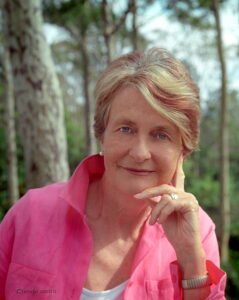We’ve Never Been Closer To Nuclear Catastrophe—Who Gains By Ignoring It?
No Comments yetAntiwar and environmental activist Dr. Helen Caldicott warns that policymakers who understate the danger of nuclear weapons don’t have the public’s best interest at heart.
Editor’s note: This interview has been edited for clarity and length. A video of the description of nuclear war from the interview can be viewed on Vimeo. Listen to the entire interview, available for streaming on Breaking Green’s website or wherever you get your podcasts. Breaking Green is produced by Global Justice Ecology Project.
This interview took place on January 25, 2023, one day after the Bulletin of the Atomic Scientists advanced the hands of the Doomsday Clock to 90 seconds before midnight—in large part due to developments in Ukraine. Dr. Helen Caldicott, an Australian peace activist and environmentalist, discussed the extreme and imminent threat of a nuclear holocaust due to a proxy war between the U.S. and Russia in Ukraine. She also addressed the announcement by the U.S. Department of Energy of a controlled nuclear reaction and outlines the relationship between the nuclear power industry and nuclear weapons.
Caldicott is the author of numerous books and is a recipient of at least 12 honorary doctorates. She was nominated for the Nobel Prize by physicist Linus Pauling and named by the Smithsonian as one of the most influential women of the 20th century. Her public talks describing the horrors of nuclear war from a medical perspective raised the consciousness of a generation.
Caldicott believes that the reality of destroying all of life on the planet has receded from public consciousness, making doomsday more likely. As the title of her recent book states, we are “sleepwalking to Armageddon.”
Steve Taylor: The Bulletin of the Atomic Scientists recently set the Doomsday Clock to 90 seconds to midnight. What is the Doomsday Clock, and why is it now set to 90 seconds to midnight?
Helen Caldicott: For the last year, it’s been at 100 seconds to midnight, which is the closest it’s ever been. Each year they reset the clock according to international problems, nuclear problems. Ninety seconds to midnight—I don’t think that is close enough; it’s closer than that. I would put it at 20 seconds to midnight. I think we’re in an extremely invidious position where nuclear war could occur tonight, by accident or by design. It’s very clear to me, actually, that the United States is going to war with Russia. And that means, almost certainly, nuclear war—and that means the end of almost all life on Earth.
ST: Do you see similarities with the 1962 Cuban missile crisis?
HC: Yes. I got to know John F. Kennedy’s Secretary of Defense, Robert McNamara, later in his life. He was in the Oval Office at the time of the Cuban missile crisis. He once told me, “Helen, we came so close to nuclear war—three minutes.” Three minutes. We’re in a similar situation now.
ST: So back then, though, famously, the world held its breath during the missile crisis.
HC: Oh, we were terrified. Terrified, absolutely terrified.
ST: That doesn’t seem to be the case today.
HC: Today, the public and policymakers are not being informed adequately about what this really means—that the consequences would be so bizarre and so horrifying. It’s very funny; New York City put out a video as a hypothetical PSA in July 2022 showing a woman in the street, and it says the bombs are coming, and it’s going to be a nuclear war. It says that what you do is go inside, you don’t stand by the windows, you stand in the center of the room, and you’ll be alright. I mean, it’s absolutely absurd.
ST: That is what you were fighting against back in the ’70s and ’80s—this notion that a nuclear war is survivable.
HC: Yes. There was a U.S. defense official called T.K. Jones who reportedly said, don’t worry; “if there are enough shovels to go around,” we’ll make it. And his plan was if the bombs are coming and they take half an hour to come, you get out the trusty shovel. You dig a hole. You get in the hole. Someone puts two doors on top and then piles on dirt. I mean, they had plans. But the thing about it is that evolution will be destroyed. We may be the only life in the universe. And if you’ve ever looked at the structure of a single cell, or the beauty of the birds or a rose, I mean, what responsibility do we have?
ST: During the Cuban missile crisis, the U.S. did not want missiles pointed at it from Cuba, and the Soviet Union did not want missiles pointed at it from Turkey. Do you see any similarities with the conflict in Ukraine?
HC: Oh, sure. The United States has nuclear weapons in European countries, all ready to go and land on Russia. How do you think Russia feels—a little bit paranoid? Imagine if the Warsaw Pact moved into Canada, all along the northern border of the U.S., and put missiles all along the northern border. What would the U.S. do? She’d probably blow up the planet as she nearly did with the Cuban missile crisis. I mean, it’s so extraordinarily unilateral in the thinking, not putting ourselves in the minds of the Russian people.
ST: Do you feel we’re more at risk of nuclear war now than we were during the Cold War?
HC: Yes. We’re closer to nuclear war than we’ve ever been. And that’s what the Bulletin of the Atomic Scientists indicated by moving the clock to 90 seconds to midnight.
ST: Does it seem like political leaders are more cavalier about nuclear exchange now?
HC: Yes, because they haven’t taken in what nuclear war would really mean. And the Pentagon is run by these cavalier folks who are making millions out of selling weapons. Almost the whole of the U.S. budget goes to killing and murder, rather than to health care and education and the children in Yemen, who are millions of them starving. I mean, we’ve got the money to fix everything on Earth, and also to power the world with renewable energy. The money is there. It’s going into killing and murder instead of life.
ST: You mentioned energy. The Department of Energy has announced a so-called fusion breakthrough. What do you think about the claims that fusion may be our energy future?
HC: The technology wasn’t part of an energy experiment. It was part of a nuclear weapons experiment called the Stockpile Stewardship Program. It is inappropriate; it produced an enormous amount of radioactive waste and very little energy. It will never be used to fuel global energy needs for humankind.
ST: Could you tell us a little bit about the history of Lawrence Livermore National Laboratory in California, where scientists developed this fusion technology?
HC: The Lawrence Livermore Laboratory was where the first hydrogen bombs were developed. It was set up in 1952, by Edward Teller, a wicked man.
ST: There is this promotion of nuclear energy as a green alternative. Is the nuclear energy industry tied to nuclear weapons?
HC: Of course. In the ’60s, when people were scared stiff of nuclear weapons, there was a Pentagon psychologist who said, look, if we have peaceful nuclear energy, that will alleviate the people’s fear.
ST: At the end of your 1992 book If You Love This Planet, you wrote, “Hope for the Earth lies not with leaders, but in your own heart and soul. If you decide to save the Earth, it will be saved. Each person can be as powerful as the most powerful person who ever lived—and that is you, if you love this planet.” Do you stand by that?
HC: If we acknowledge the horrifying reality that there is an extreme and imminent threat of nuclear war, it’s like being told that as a planet, we have a terminal disease. If we’re scared enough, every one of us can save the planet. But we have to be very powerful and determined.
Author Bio:
Steve Taylor is the press secretary for Global Justice Ecology Project and the host of the podcast Breaking Green. Beginning his environmental work in the 1990s opposing clearcutting in Shawnee National Forest, Taylor was awarded the Leo and Kay Drey Award for Leadership from the Missouri Coalition for the Environment for his work as co-founder of the Times Beach Action Group.
Source: Independent Media Institute
Credit Line: This article was produced by Earth | Food | Life, a project of the Independent Media Institute.
You May Also Like
Comments
Leave a Reply








